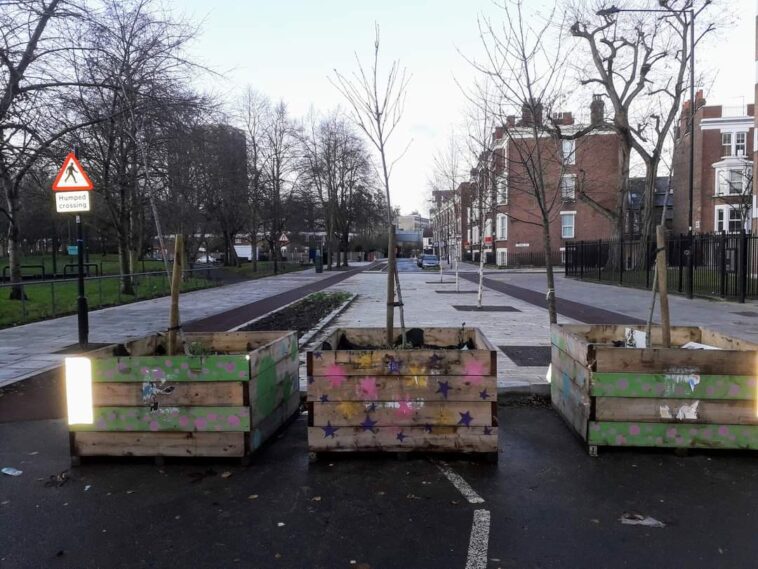Below is my interview with Angela Clarkson, Chair of the United Traders Action Group (UTAG), the Licensed Taxi Drivers Association. Discussing the recent court case of UTAG vs Mayor of London & Transport for London. We go through the different grounds for the judicial review as well as the effort and logistics of taking on the giant that is Transport for London.
The Interview will be of special interest to campaigners in Tower Hamlets in particular Grounds 2, 3 (in regard to proposed bus gates in the borough) 4 and 5.
The Interview with Angela is broken into three main parts, with sub parts. For those interested in more information about UTAG and the court case, resources and links at the bottom.
- The Life of a working-class Licensed Taxi Driver
- The Court case
- a) Background to judicial review (The Court Case)
- b) Judicial Review 101 (Explainer on Judicial Review)
- c) Ground 1 – Special Status of Licensed Taxi Drivers
- d) Ground 2 – Public Sector Equalities Duty
- e) Ground 3 – European Convention on Human Right A1P1
- f) Ground 4 – Legitimate Expectations
- g) Ground 5 – Irrationality
- h) Logistics of bringing a judicial review
3. Next Steps and Tower Hamlets Inquiry
1. The Life of a Licensed Taxi Driver
In this section, we discuss the status of Licensed Taxi Drivers in London. Is it a closed shop? How are they regulated? Are they privileged? Who do they provide a service to? Who relies on their service? (the elderly and disabled in London)
2A. Background to the Judicial Review Case
In this section we discuss the background to why UTAG was set up in 2018 to protect the trade and associated businesses. What caused them to take up the judicial review and take on the giant in London politics, TFL.
2B. Judicial Review 101 (Explainer on Judicial Review)
Background very basic explainer on judicial review. For more information: Introduction to Judicial Review by the Public Law Project
2C. Ground 1 – Special Status of Licensed Taxi Drivers in London
Ground 1: In making and promulgating the Plan and Guidance and the A10 Order, the Mayor and TfL failed to distinguish taxis from “general traffic”. In doing so, they failed to have regard to relevant considerations, namely:
a) the distinct status of taxis as a form of public transport, reflected both in law and policy;
b) the role played by taxis in facilitating accessible public transport for those with mobility impairments.
c) in respect of the A10 Order only, the network management duty under section 16 Traffic Management Act 2004 (“TMA 2004”);
d) in respect of the A10 Order only, the extent to which the objective of facilitating space for pedestrians could still be achieved by permitting taxis (but not other forms of motorised traffic), to drive through the bus gates on Bishopsgate.
2D. Ground 2 – Public Sector Equalities Duty
Ground 2: In making the Plan and Guidance and the A10 Order, TfL and the Mayor failed to have proper regard to the public sector equality duty, pursuant to section 149 of the Equalities Act 2010 (“the 2010 Act”).
Section 149 of the 2010 Act provides:
“149. Public sector equality duty
(1) A public authority must, in the exercise of its functions, have due regard to the need to –
(a) eliminate discrimination, harassment, victimisation and any other conduct that is prohibited by or under this Act;
(b) advance equality of opportunity between persons who share a relevant protected characteristic and persons who do not share it;
(c) foster good relations between persons who share a relevant protected characteristic and persons who do not share it.
(2) The relevant protected characteristics are age; disability;
…..
(3) Having due regard to the need to advance equality of opportunity between persons who share a relevant protected
characteristic and persons who do not share it involves having due regard, in particular, to the need to –
(a) remove or minimise disadvantages suffered by persons who share a relevant protected characteristic that are connected to that characteristic;
(b) take steps to meet the needs of persons who share a relevant protected characteristic that are different from the needs of
persons who do not share it;
(c) encourage persons who share a relevant protected characteristic to participate in public life or in any other activity in which participation by such persons is disproportionately low.
(4) The steps involved in meeting the needs of disabled persons that are different from the needs of persons who are not disabled
2F. Ground 3 – European Convention on Human Right A1P1
Ground 3: The Plan, the Guidance and the A10 Order were a disproportionate interference, by “control of use”, with the property rights of taxi owners and drivers in breach of Article 1 of Protocol 1 to the European Convention on Human Rights (“A1P1”).
2G. Ground 4 – Legitimate Expectations
Ground 4: The Plan and Guidance and the A10 Order breach the Claimants’ legitimate expectation to pass and repass on London’s roads, and to use lanes reserved for buses.
2H. Ground 5 – Irrationality
Ground 5: The treatment of taxis in the Plan and Guidance and the A10 Order is irrational.
2G. Logistics of bringing a judicial review
In this section we discuss the logistics and time scales in bringing an application to the courts for judicial reveiw.
3. Next Steps and Tower Hamlets Inquiry
In this section we discuss the next steps for UTAG. The appeal by TFL to the Court of Appeal. Lessons for Tower Hamlets and the forthcoming Cross-party inquiry, on Liveable Streets.
More Information
Link to UTAG website: https://utag.london/
Approved Judgment – R(UTAG and Anor) v TfL and Anor


Recent Comments